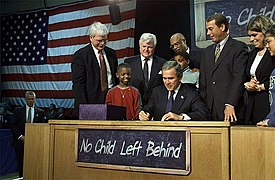
No Planet Left Behind
Education for Sustainability
Introductions
My Story of Ecological Conversion
Some background
Overview of the Evening
"No Planet Left Behind"
The State of Our Life Support System
A Quiz
Education for Sustainability
A Curriculum Response Exercise
Question and Answer

The State of Our Life Support System
"Spaceship Earth:" The Only Home We Have
We know of no other planet in the universe that can support human life
Our ecological systems thrive in a very narrow range of temperature, oxygen, and atmospheric conditions
An incredibly thin layer, ~11km, of atmosphere protects us from the uninhabitable void of space and enables life on this planet as we know it
Climate De-Stabilization

Pre-industrial atmospheric CO2 concentrations were approximately 275 parts per million. Today concentrations are approximately 392 ppm, an increase of over 30 percent and going up 2 ppm/year
Intergovernmental Panel on Climate Change (IPCC)
1995 “the balance of evidence suggests a discernible human influence on global climate
2001 “there is new and stronger evidence that most of the warming observed over the last 50 years is attributed to human activities”
2007 “Human-induced warming of the climate system is widespread”
Predicting a rise of 1.1-6.4 celsius by 2080-2099
So What?
350 ppm in atmosphere is a tipping point- keeps us around 2 degrees centigrade warmer (global average) which most scientists believe is manageable.
Above 350 ppm? A "grand experiment" on a planetary scale (we are already at 392 and growing by 2ppm/year)
Negative Impacts
Melting of Greenland ice cap and sea level rise which would threaten cities and island nations including London and New York City
Oceans will rise by as much as 1 foot in next century. 634 million live in low level coastal areas- 1/10th the world's population. (http://www.npr.org/templates/story/story.php?storyId=9162438)
Loss of glaciers that millions depend on for water
Permafrost in arctic regions could shift from sink to source
Rise in mosquito populations and resultant expansion of malaria and dengue fever
Loss of artic sea ice (in 2007, 39% below summer average from 1979-2000)- an area roughly the size of 5 United Kingdoms

Global Warming Weirding
Weather patterns more severe and unpredictable
Droughts, flooding, heat waves, unusual freezes will be more and more common
Costs: Hurricane Sandy= $65 Billion. Midwest Drought= $35 Billion (http://www.usatoday.com/story/weather/2013/01/24/global-disaster-report-sandy-drought/1862201/)
"Technology will fix it"
To keep atmospheric CO2 levels at or near 350-400ppm we will need to...
Reduce global carbon emissions by 20% of today’s levels by 2020* (no problem, right?)
But the global population and energy demand continues to grow... To keep atmospheric concentration of CO2 near 350-400ppm we will need to drop to 80% of today's levels by 2050
"We Can't Get Here From There"
"[The] numbers show the enormous challenge we face. The world used 14 trillion watts (14 terawatts) of power in 2006. Assuming minimal population growth (to 9 billion people), slow economic growth (1.6 percent a year, practically recession level) and—this is key—unprecedented energy efficiency (improvements of 500 percent relative to current U.S. levels, worldwide), it will use 28 terawatts in 2050. (In a business-as-usual scenario, we would need 45 terawatts.)
Simple physics shows that in order to keep CO2 to 450 ppm, 26.5 of those terawatts must be zero-carbon. That's a lot of solar, wind, hydro, biofuels and nuclear, especially since renewables kicked in a measly 0.2 terawatts in 2006 and nuclear provided 0.9 terawatts. Are you a fan of nuclear? To get 10 terawatts, less than half of what we'll need in 2050, Lewis calculates, we'd have to build 10,000 reactors, or one every other day starting now. Do you like wind? If you use every single breeze that blows on land, you'll get 10 or 15 terawatts. Since it's impossible to capture all the wind, a more realistic number is 3 terawatts, or 1 million state-of-the art turbines, and even that requires storing the energy—something we don't know how to do—for when the wind doesn't blow. Solar? To get 10 terawatts by 2050 ... we'd need to cover 1 million roofs with panels every day from now until then." - Sharon Begley
http://www.thedailybeast.com/newsweek/2009/03/13/we-can-t-get-there-from-here.html
"... We need Nobel-caliber breakthroughs."
Stephen Chu, Energy Secretary
Beyond Climate Destabilization

Habitat Loss

Lose 36 football fields of forest/minute
Extinctions 1000 times the background rate (pre-industrialization)
30-70% loss of amphibians since 1970

Population Growth
The first billion took from the dawn of humanity until 1830.
The second billion took only 100 years -- from 1830 to 1930.
Three billion more arrived in the next 60 years.
The next billion will take only 13 years.
EAARTH? A "Artificial World"
Genetically modified (and privately owned) species

Plastics: The Pacific Ocean Garbage Patch

Geo-engineering
Consumption
How many planets would we need if everyone on the planet lived like an American?
3.2 planets

Source: World Bank Development Indicator 2008

Growing up "de-natured"
6% of 9-13 yr olds play outside in a typical week
Children, ages 8 to 18, spend more time (44.5 hours per week) in front of computer, television, and game screens than any other activity in their lives except sleeping (Kaiser Family Foundation, 2005).
Declining recess time in US elementary schools: 26 minutes
http://opinionator.blogs.nytimes.com/2011/04/04/hard-times-for-recess/
David Orr:
"The truth is that many things on which our future health and prosperity depend are in dire jeopardy: climate stability, the resilience and productivity of natural systems, the beauty fo the natural world, and biological diversity.
It is worth noting that this is not the work of ignorant people. Rather it is largely the result of work with people with BA's, BSs, LLBs, MBAs, and PhDs." (p. 7)
A Quiz!
10 questions. Complete on a piece of paper
#1. Name at least 3 non-resident bird species that we might expect to see in this area during the Spring migration.
#2. Which of the following vegetable seeds can be successfully planted before May 1st in this area
Carrot
Tomato
Radish
Broccoli
#3. Name 3 tree species that can be seen on campus
#4. What is the name of the main river system in this area and what river does it flow into?
#5. Which of the following were native to this area?
Moose
Black Bear
Mountain Lion
Wolf
Bison
#6. When you take a drink from the water fountain in this building, where does that water come from?
#7. A monarch butterfly must lay its eggs on what plant?
#8. What type of energy sources heat, cool, and power the buildings on campus and where does it come from?
#9. What combination of plants make up the Native American farming model known as the “3 sisters”?
#10. Define the following terms:
Triple Bottom Line Accounting
Cradle-to-Cradle Design
Cap and Trade Systems
Small Groups
How many did you get right?
Orr: "This is not the work of ignorant people." Is this a problem? Should every college student know these things? Why or why not?
Commencement
The Real Work
The Real Work
It may be that when we no longer know what to do
we have come to our real work,
and that when we no longer know which way to go
we have come to our real journey.
The mind that is not baffled is not employed.
The impeded stream is the one that sings.
W. Berry
This much we know
Our world, our life support system, is changing rapidly and we are the cause of it
Many of these changes are dramatically affecting the ability for all lifeforms on this planet to flourish and thrive- both now and into the future
We are experimenting with the stability and resilience of this life support system at a grand and unprecedented scale
There is much we don't know
What kind of planet will our children, and our children's children inherit?
What role will educators (and schools) play in responding to this crisis when we look back 25 years from now?
There is real work to be done- both at the individual and structural levels. Let's begin.

A Curricular Response

"No Planet Left Behind"
In groups
Read the case
Deliberate on your curriculum response
Remember: your entire focus is a comprehensive curriculum to this planetary emergency. You should think BIG! We can't afford half-measures...
You can focus on a particular grade-level if that helps
Discussion
What did you come up with?
EFS at all grade levels
What is currently being done?
Kindergarden/Elementary

"Forest and Eco-Schools"
"Imagine a world with communities thriving by revitalising the ecosystems they are part of - producing healthy water, clean energy, rich biodiversity, nurturing buildings and healthy food. Where schools and community are one, with young people gaining skills, knowledge and experiences to design and create their schools, neighbourhoods and country.
877 schools, kura and early childhood centres have already begun!"
http://www.enviroschools.org.nz/
Middle School

Eco-Literacy Requirements (MD)
"The goal of environmental education is to develop a world population that is aware of, and concerned about, the environment and its associated problems, and which has the knowledge, skills, attitudes, motivations, and commitment to work individually and collectively toward solutions of current problems and the prevention of new ones.
The Tbilisi Declaration followed the Belgrade Charter and established these objectives for environmental education:
To foster clear awareness of, and concern about, economic, social, political, and ecological interdependence in urban and rural areas;
To provide every person with opportunities to acquire the knowledge, values, attitudes, commitment and skills needed to protect and improve the environment;
To create new patterns of behavior of individuals, groups and society as a whole towards the environment."
From: http://www.marylandpublicschools.org/MSDE/programs/environment/
High School

Environmental Charter High School
"Environmental Charter High School (ECHS) is an award winning, free, public high school in South Los Angeles that prepares students for 4-year colleges using the environment as a lens for real-life learning. Our schools place an emphasis on experiential, project-based learning that engages students as it prepares them to become leaders in their communities."
http://echslawndale.org/
College
AASHE

"AASHE envisions a prosperous, equitable, and ecologically healthy world. In such a world, higher education plays a vital role in ensuring that people have an understanding of the interdependencies between environmental, social, and economic forces and the skills and abilities to meet sustainability challenges."
http://www.aashe.org/about/aashe-mission-vision-goals
Education for Sustainability
Education for Sustainability

Al Gore's "Inconvenient Truth." Not once did he mention the role of education and schooling.
"My point is simply that education is no guarantee of decency, prudence, or wisdom. More of the same kind of education will only compound our problems. This is not an argument for ignorance but rather a statement that the worth of education must now be measured against the standards of decency and human survival-- the issues now looming so large before us in the 21st century. It is not education, but education of a certain kind, that will save us." (Orr, p. 8)

Sustainability and Schooling
How do we come to a relationship with the natural world?
What role does culture play in normalizing destructive attitudes, behaviors, and values about the natural world?
What role does schooling play? What role should it play?
What role can schooling play in encouraging positive, life-giving attitudes, values, and behaviors about the natural world?
Schooling as a fulcrum point of social change
Definitions
Sustainability
Defined
Brundtland Report
"Sustainable development is development that meets the needs of the present without compromising the ability of future generations to meet their own needs". (1987)

The three-legged stool
Sustainability as an "infinite game" (James Carse)
"Infinite games, on the other hand, do not have a knowable beginning or ending. They are played with the goal of continuing play and a purpose of bringing more players into the game. An infinite game continues play, for sake of play."
from: http://en.wikipedia.org/wiki/Finite_and_Infinite_Games
"Education for Sustainability (EfS) is defined as a transformative learning process that equips students, teachers, and school systems with the new knowledge and ways of thinking we need to achieve economic prosperity and responsible citizenship while restoring the health of the living systems upon which our lives depend." (Cloud Institute)
From: http://cloudinstitute.org/brief-history/
Education ABOUT sustainability-> Education FOR sustainability->Education THROUGH sustainability
Epistemological Claims
Interdisciplinarity
Systems Thinking
"A sustainable society is one that is far-seeing enough, flexible enough, and wise enough not to undermine either its physical or its social systems of support.”- Donella Meadows
Pragmatic "action" research
Social, collaborative knowledge co-generation
Transformative Learning
Methodological Drivers of EfS
Integrated, thematic curriculum
Experiential learning
Service learning and civic engagement
Learning laboratories
Community-Based Research
Problem/Project-based learning
Place-Based learning
